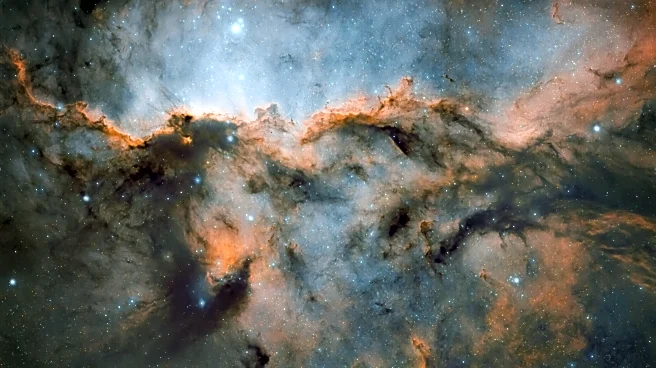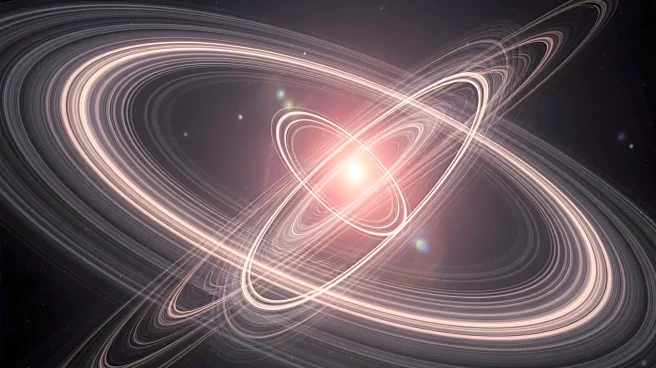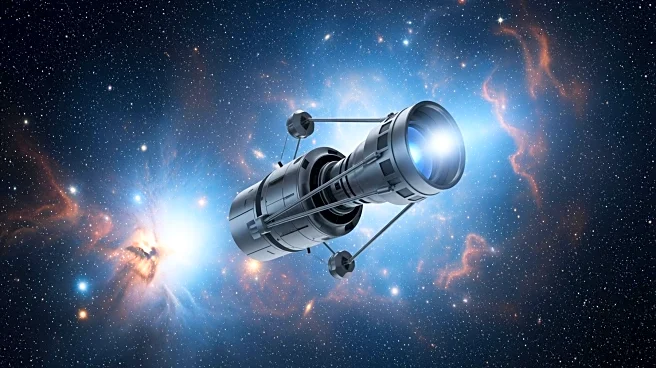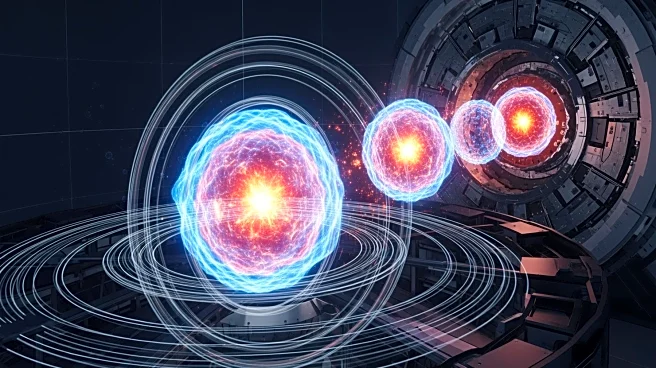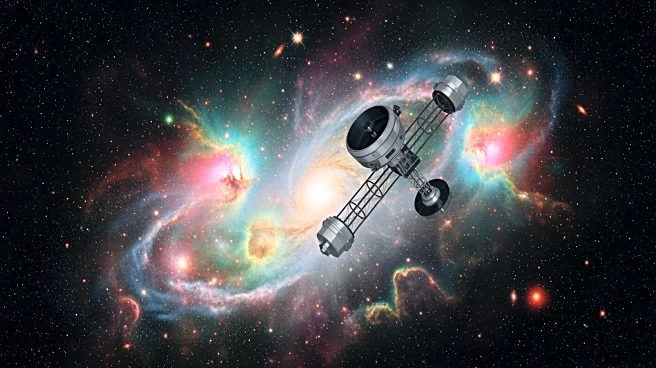What's Happening?
An international team of researchers, led by the University of Oxford, has successfully generated plasma 'fireballs' using the Super Proton Synchrotron accelerator at CERN in Geneva. This groundbreaking
experiment aims to understand how plasma jets from distant blazars remain stable as they traverse space. The study, published in PNAS, addresses the mystery of missing gamma rays and the Universe's invisible magnetic fields. Blazars, powered by supermassive black holes, emit powerful jets of particles and radiation, releasing gamma rays detected by observatories. As these rays travel through space, they interact with background light, producing electron-positron pairs that should create lower-energy gamma rays. However, this expected signal has not been observed by gamma-ray space telescopes like NASA's Fermi satellite. The research explores two theories: weak magnetic fields deflecting pairs or plasma instabilities causing disturbances. The experiment recreated cosmic conditions, revealing that plasma instabilities are too weak to account for missing gamma rays, supporting the theory of ancient magnetic fields in the intergalactic medium.
Why It's Important?
This discovery has significant implications for understanding the Universe's magnetic fields and the behavior of cosmic jets. The findings suggest that the intergalactic medium contains a magnetic field from the early Universe, challenging existing theories about the formation of such fields. This could lead to new insights into the physics beyond the Standard Model, potentially altering our understanding of cosmic evolution. The research highlights the importance of laboratory experiments in bridging theory and observation, enhancing knowledge of astrophysical phenomena. It underscores the collaborative efforts of global experimental facilities in exploring extreme physical regimes, paving the way for future observatories like the Cherenkov Telescope Array Observatory to provide sharper data for further exploration.
What's Next?
The results prompt new questions about the origin of magnetic fields in the early Universe, suggesting the need for further investigation into physics beyond the Standard Model. Future observatories are expected to offer more precise data to explore these theories. The research team anticipates that their findings will stimulate interest in the plasma astrophysics community, encouraging further experiments to probe fundamental cosmic questions. Continued collaboration among international research facilities will be crucial in advancing our understanding of the Universe's hidden magnetism and the processes shaping cosmic jets.
Beyond the Headlines
The study opens up discussions on the ethical and scientific implications of using high-energy physics laboratories to simulate cosmic conditions. It raises questions about the role of experimental astrophysics in testing theories of the high-energy Universe and the potential for laboratory experiments to influence our understanding of cosmic phenomena. The collaboration between various international institutions highlights the importance of interdisciplinary approaches in tackling complex scientific challenges.


